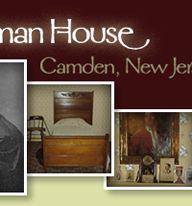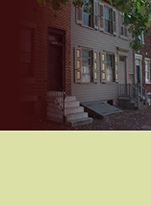 |
 |
|
 |
 |
|
 |
 |
"Camden was originally
an accident, but I shall never be sorry
I was left over in Camden. It has brought
me blessed returns."
 -Walt
Whitman -Walt
Whitman
In 1884, Walt Whitman purchased a modest
two-story frame house on Mickle Street
for $1750. It is the only house he ever
owned. He lived there until his death
in 1892, at the age of seventy-two.
He had come to Camden years earlier, in 1873, and lived with his
brother George on nearby Stevens Street. By this time, Whitman's
international reputation attracted the attention of the days most
prominent literary figures. Among them, Bram Stoker and Oscar Wilde came to Camden to visit America's
greatest poet.
When George and his wife Louisa decided to move to rural Burlington,
New Jersey, Walt chose to stay in Camden. With the surprising success
of the 1882 edition of Leaves of Grass Whitman was able to
purchase his own home. He soon met Mary O. Davis, the widow of a
sea captain, who was renting a house on West Street. The aging poet
proposed that she move into his empty house with her furniture, rent
free, and keep house for him. He would provide the living expenses
and pay her a small salary. Mrs. Davis moved in and remained with
Whitman until his death on March 26, 1892. Whitman referred to Mary
as his housekeeper and friend.
During his years in Camden, Whitman became a friend of the Philadelphia
artist, Thomas Eakins. These two giants of nineteenth-century American
culture found much to admire in each other's work. Each in his own
medium broke with conventions, creating something new and distinctly
American. Eakins photographed Whitman and painted his portrait.
Today the Walt Whitman House, a National Historic Landmark, provides
an intimate glimpse into the life of the poet, attracting visitors
from around the world. Whitman's original letters, personal belongings,
the bed in which he died, and the death notice that was nailed to
the front door have all been preserved, as well as a collection of
rare nineteenth-century photographs, including the earliest known
image of Whitman - an 1848 daguerreotype. |
|
|
|
|



